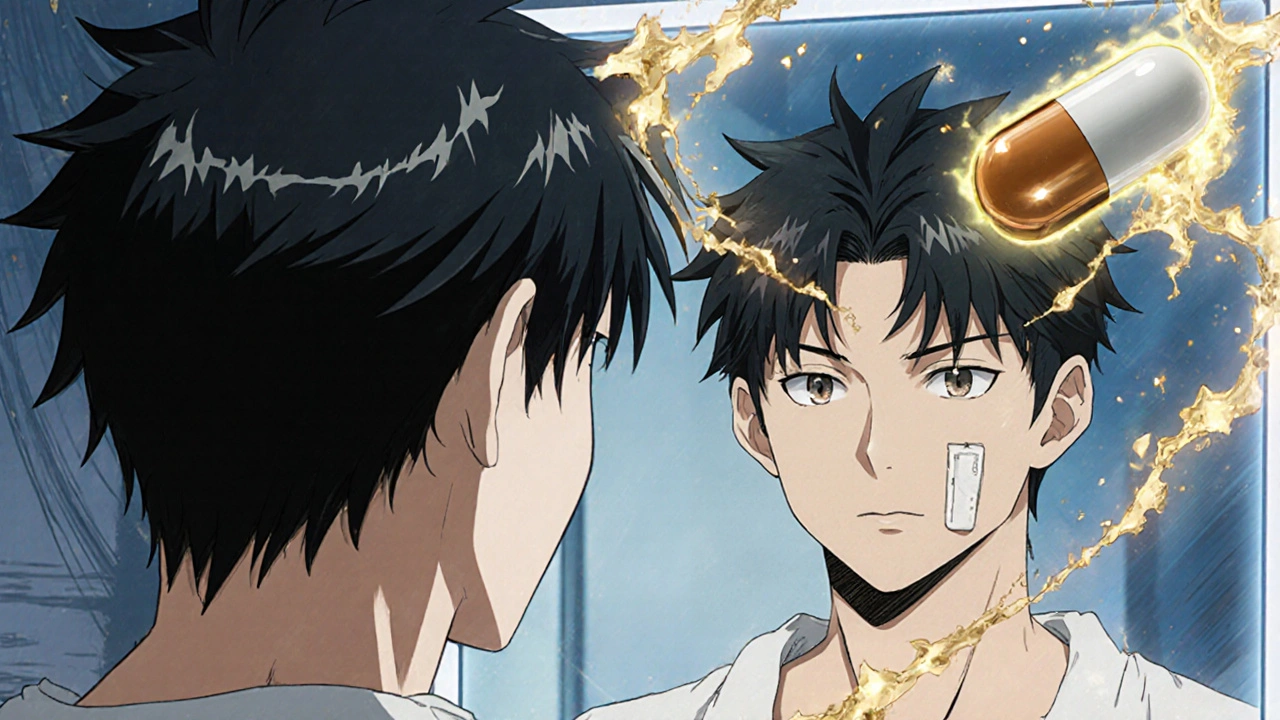
Most men don’t realize it until they’re staring at their reflection one morning and notice a thinning crown or a receding hairline. By then, the damage is already done. Finasteride isn’t a miracle cure-it’s a tool. And like any tool, it works best when used before the problem gets out of hand.
How Finasteride Actually Works
Finasteride blocks an enzyme called 5-alpha-reductase, which turns testosterone into dihydrotestosterone (DHT). DHT shrinks hair follicles over time, leading to thinning and eventual hair loss in genetically sensitive men. This isn’t just about looks-it’s about biology. Once follicles shrink too much, they stop producing hair altogether. That’s why you can’t regrow hair where there’s no follicle left.
Finasteride doesn’t create new hair. It stops the process that kills it. Studies show that men who start finasteride within the first five years of noticing thinning have a 90% chance of stopping further loss. After ten years? That number drops to under 50%. The earlier you act, the more follicles you save.
The Window of Opportunity
There’s a critical window-usually between ages 25 and 35-when early intervention with finasteride has the biggest impact. That’s when DHT levels start quietly attacking follicles, but most men still have plenty of active hair roots left. Waiting until your scalp is visibly bald means you’re fighting a losing battle.
One 2023 long-term study tracked over 1,200 men using finasteride. Those who started before age 30 maintained thick hair density for over 15 years. Those who waited until 40 or older saw modest improvement at best, and many still lost significant coverage despite consistent use.
It’s not about vanity. It’s about preserving what’s still there. Hair follicles don’t vanish overnight. They fade slowly, over years. Finasteride works like a shield-put it up before the arrows start flying.
What Happens If You Wait Too Long?
Men who delay treatment often end up in a cycle of frustration. They see others using finasteride and get results, then try it themselves-only to be disappointed. They blame the drug. But the drug isn’t the problem. The problem is timing.
By the time someone starts finasteride in their 40s or 50s, many follicles have already turned into tiny, inactive specks. Finasteride can’t revive dead follicles. It can only protect the ones still fighting. That’s why some men see no change after six months. They didn’t fail-they just started too late.
Think of it like a leaky roof. If you fix it after the ceiling collapses, you still have to rebuild everything. If you fix it at the first drip, you just need a patch.
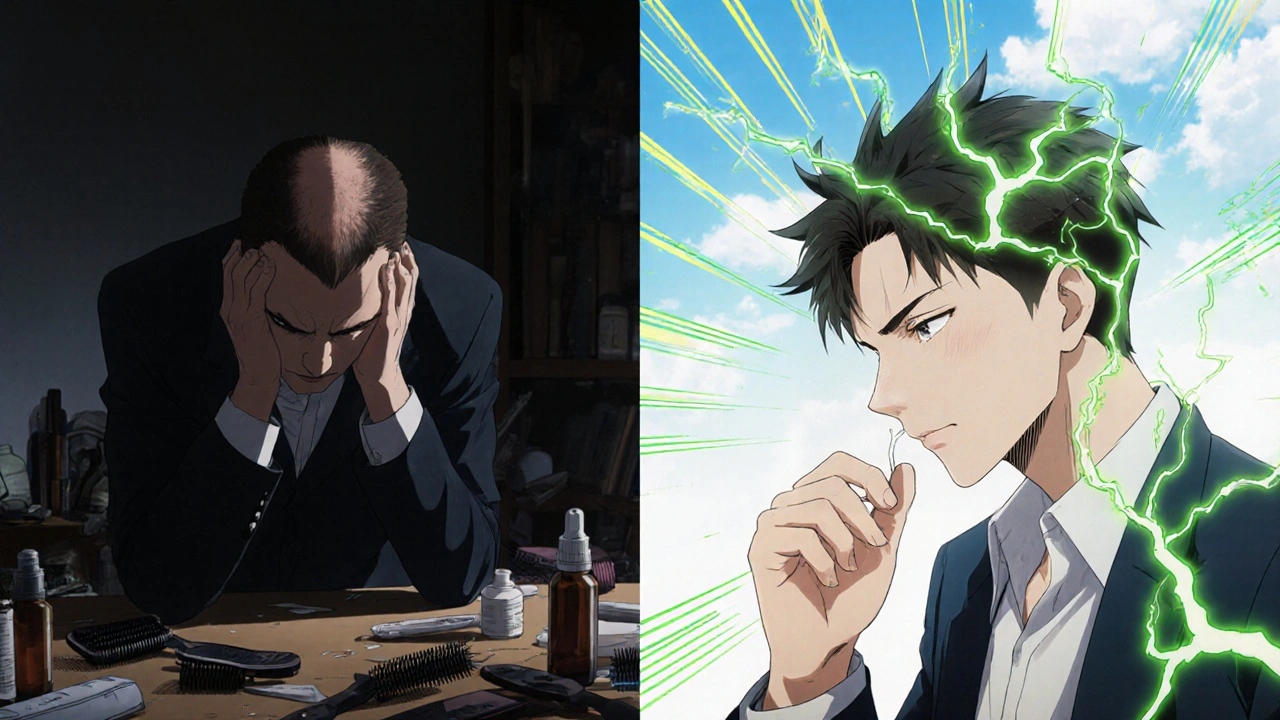
Real Signs You Should Start Now
You don’t need to wait for a bald spot to appear. Here are early signs finasteride could help:
- More hair than usual on your pillow or in the shower drain
- Noticeably thinner hair at the temples or crown
- A widow’s peak that’s slowly moving backward
- Scalp becoming more visible when you part your hair
- Family history of male pattern baldness before age 35
If any of these apply to you, don’t wait for confirmation. Get a scalp check from a dermatologist. A trichoscope can show miniaturized follicles before they’re visible to the naked eye. That’s the real early warning system.
What to Expect When You Start
When you begin finasteride, you might notice shedding in the first 2-4 weeks. That’s normal. It’s the weak hairs falling out so healthier ones can grow back. Don’t panic. This isn’t more loss-it’s cleanup.
Most men see stabilization by month 3-6. Some see subtle thickening by month 9-12. But results vary. The goal isn’t to look like you’re 20 again. It’s to stop looking older than you are.
Consistency matters more than perfection. Skip a dose? No big deal. But if you stop for months, DHT creeps back, and so does the thinning. Finasteride only works while you’re taking it.
Side Effects and Misconceptions
There’s a lot of fear around finasteride. Some say it causes depression, low libido, or permanent side effects. Let’s be clear: for 97% of men, side effects are mild and temporary. A 2024 meta-analysis of 18,000 users found that less than 2% reported sexual side effects, and most of those reversed after stopping the drug.
What’s more dangerous? Taking finasteride-or letting hair loss go untreated and watching your confidence slip with it? The psychological toll of progressive baldness is real. Studies link it to increased anxiety, social avoidance, and lower self-esteem-even in men who aren’t obsessed with looks.
Finasteride isn’t perfect. But it’s the most studied, most effective treatment we have for male pattern baldness. And it’s safer than most over-the-counter supplements that promise miracles but deliver nothing.
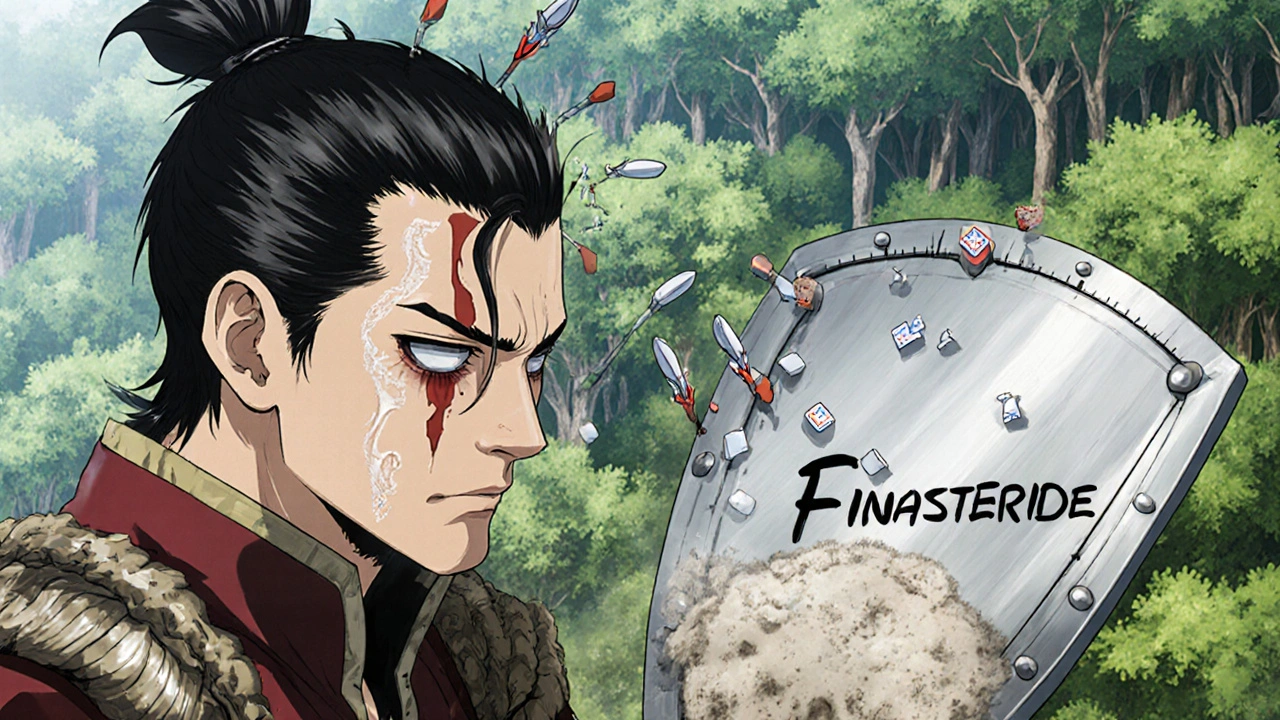
Combining Finasteride With Other Strategies
Finasteride works best when paired with simple habits:
- Minoxidil (topical) can boost results by 10-15% when used together
- Low-level laser therapy may help maintain scalp health
- Reducing stress and getting enough sleep supports overall hair growth
- Avoiding tight hairstyles and harsh chemical treatments protects fragile follicles
There’s no magic combo. Just smart, consistent care. Finasteride is the foundation. Everything else is extra.
Who Should Avoid Finasteride?
Finasteride isn’t for everyone. Don’t take it if:
- You’re pregnant or planning to father a child (it can affect fetal development)
- You have liver disease (finasteride is processed by the liver)
- You’re under 18 (hair loss patterns aren’t stable yet)
- You’re allergic to any ingredient in the tablet
Always talk to a doctor before starting. Blood tests aren’t always needed, but a baseline check helps rule out other causes of hair loss like thyroid issues or iron deficiency.
The Bottom Line
Finasteride isn’t a quick fix. It’s a long-term investment in your appearance and self-image. The cost is low-about $10-$20 a month in most places. The benefit? Keeping your hair, your confidence, and your sense of control.
If you’re noticing early signs of thinning, don’t wait for it to get worse. Don’t hope it’ll stop on its own. Don’t rely on YouTube hacks or expensive serums. Start finasteride now. Not tomorrow. Not next year. Now.
Because the best time to protect your hair was five years ago. The second best time? Today.
How long does it take for finasteride to work?
Most men see hair loss stop within 3 to 6 months. Visible thickening usually takes 9 to 12 months. It’s not instant, but consistent use leads to stable results over time.
Can finasteride regrow hair on a completely bald scalp?
No. Finasteride protects existing follicles but cannot revive dead ones. If the scalp is smooth and shiny with no visible hair follicles, regrowth isn’t possible with finasteride alone. Early use is key to preserving follicles before they’re gone.
Is finasteride safe for long-term use?
Yes. Studies show finasteride is safe for use over 10-20 years. The most common side effects-like reduced libido-are rare and usually reverse after stopping. Long-term users in clinical trials showed no increased risk of serious health issues.
Do I need a prescription for finasteride?
In most countries, including New Zealand, finasteride requires a prescription. A doctor can confirm if your hair loss is due to DHT and rule out other causes like nutrient deficiencies or thyroid problems.
What happens if I stop taking finasteride?
Hair loss will resume within 6 to 12 months after stopping. The DHT levels return to normal, and follicles begin shrinking again. To maintain results, you need to keep taking it. It’s not a cure-it’s maintenance.
Write a comment
Your email address will not be published.

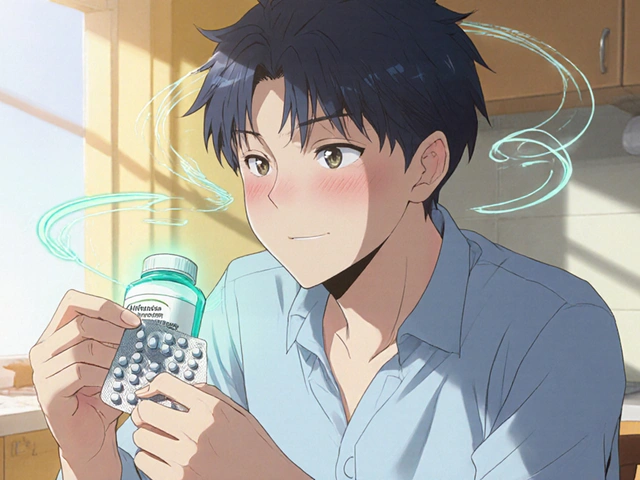

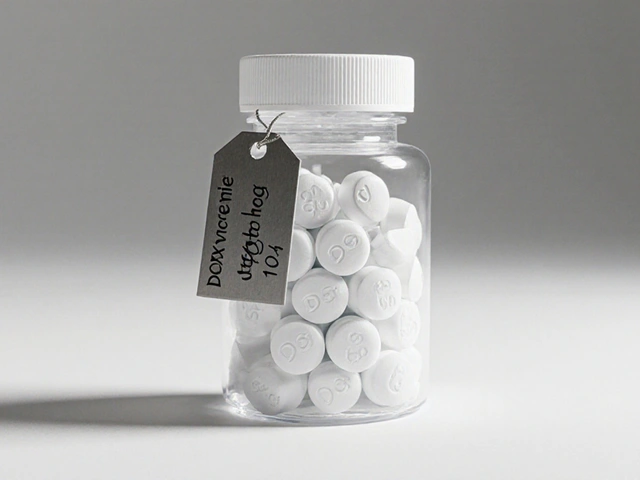
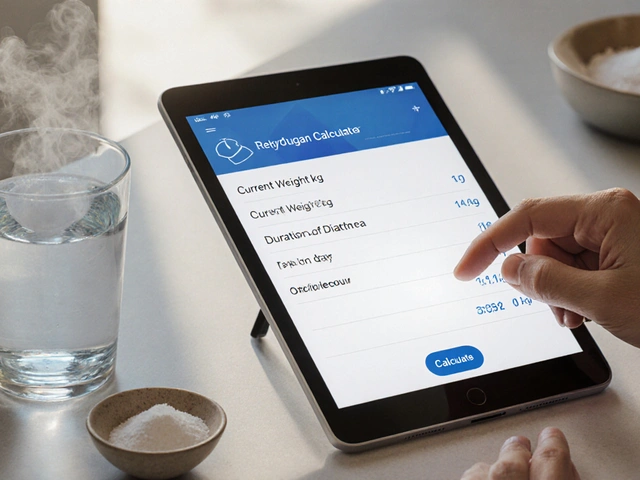
9 Comments
okay but what if finasteride is just a big pharma scam to keep men paying for something that doesnt even work long term? 🤔 i read this one guy on reddit who said his hair grew back after he stopped using shampoo and started rubbing garlic on his scalp. like... maybe the real problem is weve been conditioned to think we need chemicals to be attractive? 🧄🧬
if you're waiting until you see thinning you're already late. the clock starts ticking at 21 not 35. i saw a dude at the gym with a full head at 42 and asked him his secret he said 'i started finasteride at 24 and never looked back' bro you don't get to be middle aged and surprised by your scalp. this isn't a choice it's a responsibility
The data presented is statistically sound but ignores the fundamental flaw in the entire paradigm: the assumption that male pattern baldness is a pathology requiring intervention. This is a natural biological process rooted in evolutionary fitness. The psychological distress cited is a social construct, not a medical one. Men have gone bald for millennia without pharmaceutical intervention. The real epidemic is not hair loss-it is the commodification of insecurity.
i started finasteride at 28 after noticing my part was getting wider. first 2 weeks i panicked thinking i was losing more but then it stabilized. now at 32 i still have my hairline and honestly it’s the best decision i ever made. no drama no hype just took it and moved on with life. if you’re even thinking about it just start. you’ll thank yourself in 5 years
as a canadian who's watched his dad go completely bald by 45 i wish someone had told me this when i was 25. i waited till 31 and now i'm on finasteride and minoxidil. it's not perfect but my crown is holding. also side effects? mine were just mild brain fog for a month then gone. worth it. and yeah i know some people say 'just embrace it' but if you can keep your confidence intact why wouldn't you? no shame in prevention
i just started it last month and i'm scared i'm gonna lose my libido 😅 but my brother said he's been on it for 8 years and his sex drive is fine? is that normal? like i just want to know if i'm gonna turn into a zombie or something
The efficacy curve is well documented. The real issue is the cultural infantilization of male aging. Baldness isn't failure-it's maturity. But I take it anyway. Because I'd rather look like a man who chose to preserve his youth than one who let time win.
i know it's scary to start something that affects your hormones but you're not alone. i started finasteride after my 30th birthday and yeah the first month was rough but my dermatologist said shedding is normal. now my hair feels thicker and i'm not checking my pillow every morning 😭 you got this. and if you're nervous talk to someone-i found a reddit group that was super helpful
i just wanted to say thank you for writing this. i’ve been silently stressing about my thinning hair for years and didn’t know where to turn. you made me feel like it’s okay to care and that there’s a real path forward. no pressure, no judgment-just facts and compassion. that’s rare. i’m booking my dermatologist appointment this week 💛